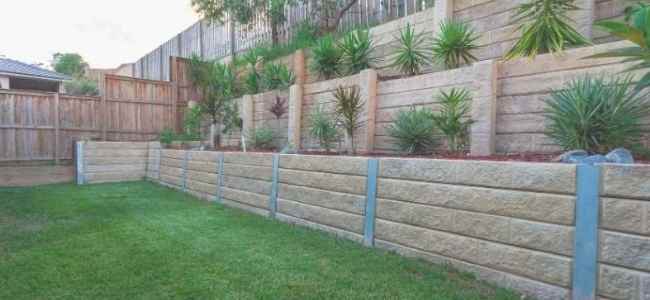There is a growing trend across the globe to consider a new approach toward maintaining and upgrading an existing property. The modern homeowner has become accustomed to constantly seeking methods of increasing the property value. Consider how you can increase property value by improving its curb appeal first before you spend thousands of dollars on interior designing or remodeling. You can accomplish this by adding landscape design features and retaining walls to the exteriors. Many homeowners have considered and attempted the addition of a retaining wall as a result of its adaptability of design and practical applications.
Types of Retaining Wall
It is important to note that there are two types of retaining walls before considering how to build one. Weight and material are the major factors determining how well non-reinforced walls resist the load. In contrast, the geosynthetic reinforcement material is used to construct the reinforced walls. Besides adding aesthetic value to the adopted landscape, the retaining wall construction also helps control precious soil erosion. Moreover, the retaining walls are decorative and give an aesthetically pleasing effect. These tiered retaining walls have become increasingly popular for their sprucing up the exterior and adding value by way of their interconnected terraces. With the introduction of the Highland Stone, homeowners can easily build retaining walls. Natural stone provides a similar face texture to your chosen design. Defining the retaining wall construction may be an experiment in which prearranged patterns or random placements are used.
Building a retaining wall – what’s the best method?
By following these expert suggestions provided by Atlantic brick and stone you can build a wall according to your need without any problem. Well, planning, evaluation of the location features and installation work are all required in the project. Plan everything thoroughly before getting started. A detailed layout of the site will be needed for the retaining wall construction. Locations, length, elevation, underground utilities, and water management were all needed to devise a site plan.
Retaining Wall Design
Retaining wall designs also need information about the soil beneath and a plan for the walls to be built. This blueprint is a design for the wall; therefore, it is essential that an engineer is involved when creating a retaining wall construction plan. In general, engineers have the best knowledge of the quantity of material to be used for stabilizing the retaining wall. Also, the engineer knows how to give you detailed plans for building a retaining wall. Building a retaining wall with geo-synthetic reinforcement depends on site conditions, height, length of the wall, etc. The next step is to assess the site for safety and to double-check materials.
Protect your Investment
You need to protect your invested materials from the equipment surrounding them when you start a retaining wall construction project. Keeping block, reinforcing and base materials in one place is necessary. Make sure to leave a drainage space around the area and thoroughly inspect the material. Because the investment is not small, you need to be sure the material delivered matches what you were charged for. The blocks can be elevated to prevent the reinforcement material from getting wet. Building retaining walls requires adherence to the established safety protocols and practices to ensure job site safety.
Other important steps
You will need to maintain safe slopes and coordinate with the foreman while attempting retaining wall construction. This enables you to determine the type of underground utilities present and their location. Technology, innovative materials, and innovative designs, combined with readily accessible applicable technology, have enhanced the construction process of retaining walls. The latest is an analysis of global stability, which uses a new algorithm for risk modeling. By utilizing this technology and conducting a little research and planning, you can be assured your retaining wall accentuates the exteriors of your home and is constructed to accommodate future expansions.




